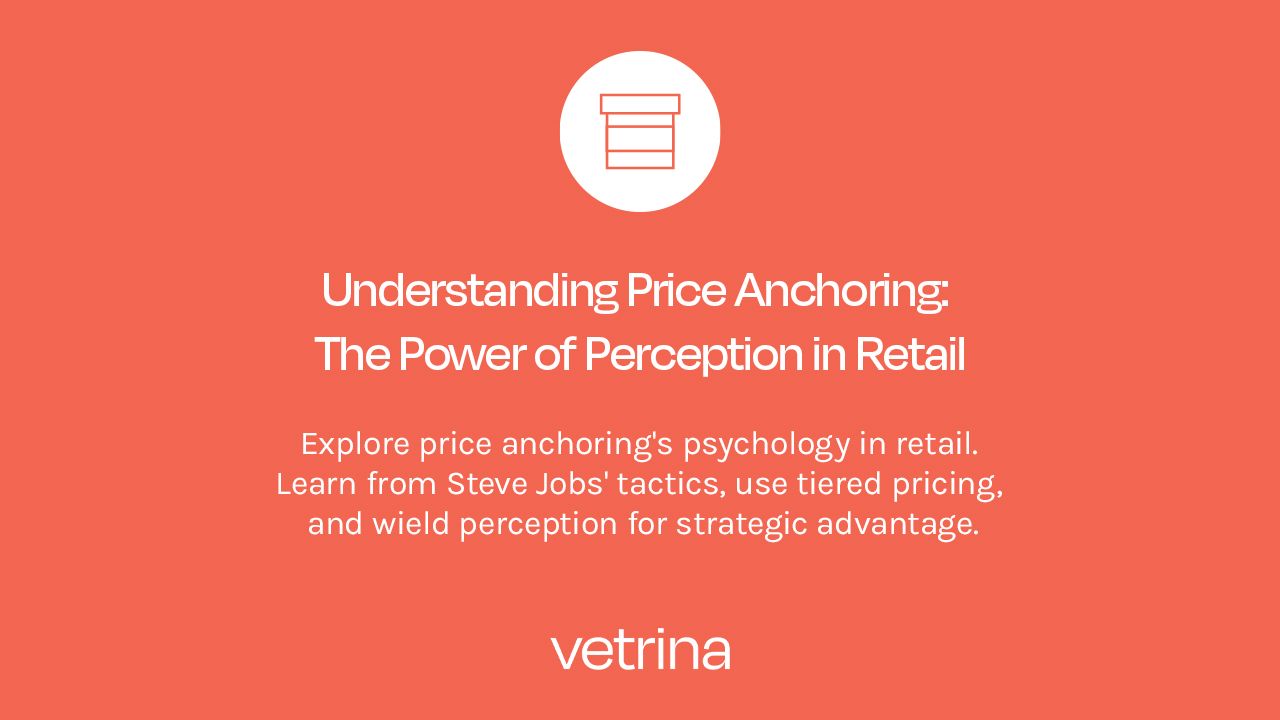
Understanding Price Anchoring: The Power of Perception in Retail
Sep 04, 2023Imagine visiting the detergent aisle of a grocery store, a crucial item on your grocery list. You are often bombarded with overwhelming options while shopping the aisle. One bottle may boast a well-known brand name, such as Tide, while another, a little less flashy, may belong to the store's own brand, like Target.
What often catches our eye is the price difference. The store brand is approximately 30% cheaper than Tide. Your inner frugal shopper rejoices – saving money always feels good.
You grab that store-brand bottle, pat yourself on the back for being a savvy consumer, and happily move on with your day.
But have you ever stopped to wonder why some products seem expensive while others feel like a steal? It all boils down to a simple concept: relativity.
The way we perceive the value of a product is relative to other options that are presented to us, and this relativity can be manipulated through price anchoring to shape our perception of value.
Now imagine stepping into your favourite store, whether it's a big corporate cannabis retail store or a charming local shop. You scan the shelves, assessing assortment and selection. You will do the same when you get to the digital cannabis menu. By scanning options and prices you are quickly building a feel for prices.
If the store signage and menu are well-designed, they can provide cues to help you determine what is a good deal and what is not. However, how can a cannabis retail store assist a consumer in making a purchasing decision based on pricing?
The secret lies in price anchoring.
What is Price Anchoring
Price anchoring is the practice of establishing a reference point for customers to consider when making purchasing decisions. For example, when a discount is presented as "Was $100, Now $75," the initial price of $100 serves as the anchor for the discounted price of $75. The relativity of prices can significantly affect consumer decisions by manipulating cognitive biases and altering our perception of value.
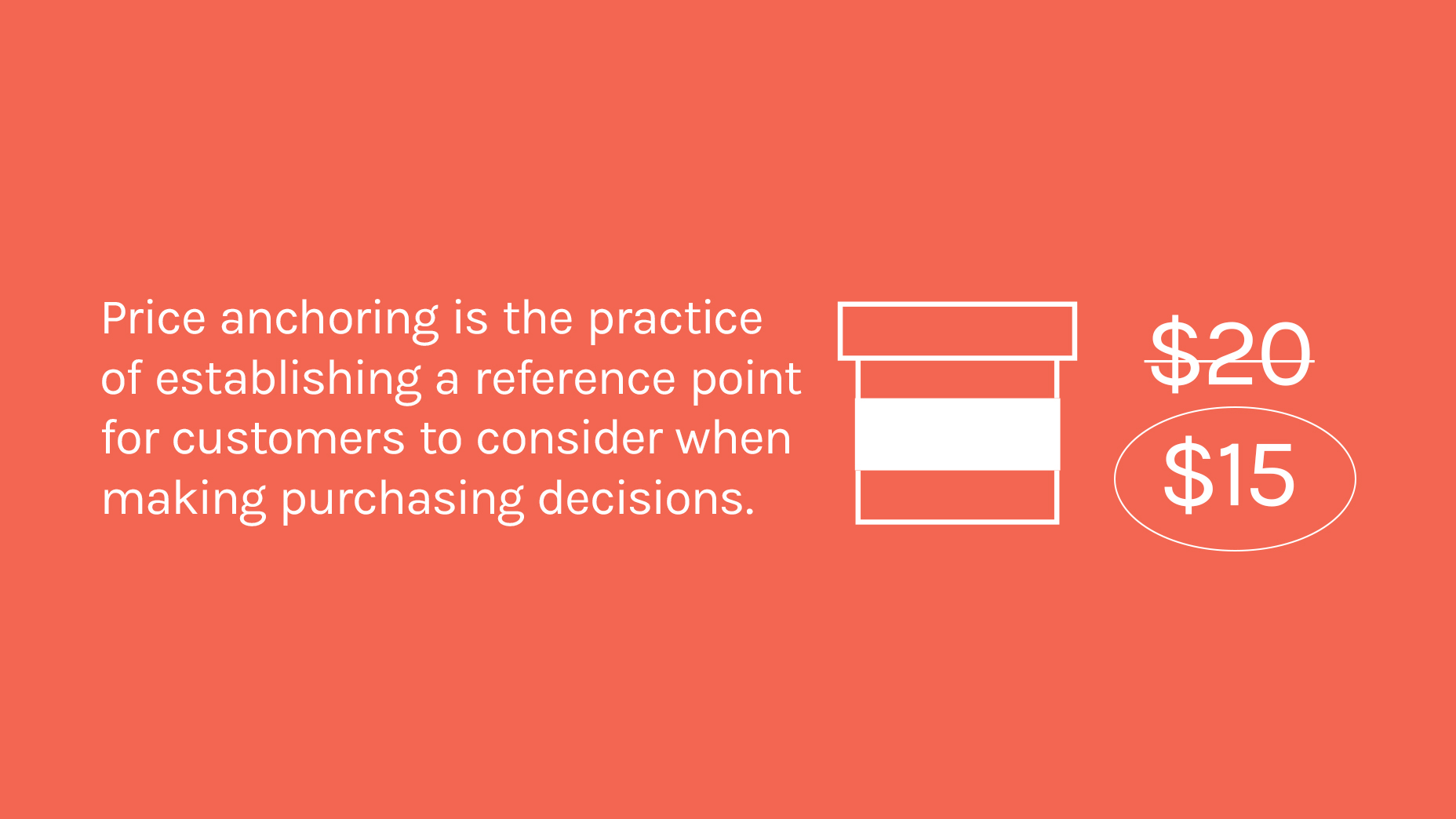
The Psychology Behind Price Anchoring
The psychology behind price anchoring involves understanding the cognitive biases we all have and altering our perception of value by establishing a reference point for customers to consider when making purchasing decisions. By setting a higher initial reference point, retailers can significantly affect consumer decisions and influence their perception of value.
Price Anchoring in Action: The Apple iPad
Steve Jobs, a visionary in the world of technology, understood the art of price anchoring like few others. In 2010, during one of his iconic product launches, he used this psychological technique to captivate his audience and shape their perception of value. The unveiling of the iPad was not just about the device; it was a masterclass in price perception.
As he stood on stage, the anticipation in the room was palpable. Analysts had speculated that the iPad's price would reach a staggering $999, a figure that was boldly displayed on the massive screen behind Jobs. This strategic move served as the anchor, setting the stage for what was to come.
With the audience's attention firmly anchored to the $999 price point, Jobs masterfully continued his presentation. The crowd watched as he navigated through the features and capabilities of the iPad, building a sense of awe and expectation. And then, with impeccable timing, he revealed the true price: $499. The room erupted into applause and a standing ovation ensued. Anchored to the initial expectation of $999, $499 felt like an absolute steal.
This moment represents the core of price anchoring. Jobs realized that by setting a higher starting point, he could greatly impact how valuable people thought the product was. Showing the two numbers side by side made a big difference and made the deal seem better. The reaction of the audience wasn't just because of the iPad's abilities; it showed how important perception and comparison are.
Steve Jobs' approach with the iPad is a textbook example of how price anchoring can shape consumer behaviour and purchasing decisions. It highlights the dynamic interplay between our cognitive biases and the information presented to us. Jobs didn't just unveil a groundbreaking device; he orchestrated a psychological dance that left an indelible mark on the audience's perception of value.
How to Use Price Anchoring
When it comes to incorporating price anchoring into your retail strategy, there are practical steps you can take to make the most of this psychological phenomenon.
Tiered Pricing Strategies
Implementing price anchoring often involves creating a tiered pricing strategy. Offering different versions of a product at varying prices builds in anchor prices and taps into the multi-price mindset. Be mindful to not offer so many options that are too similar though, or you can fall into a trap of slow-moving or glut products.
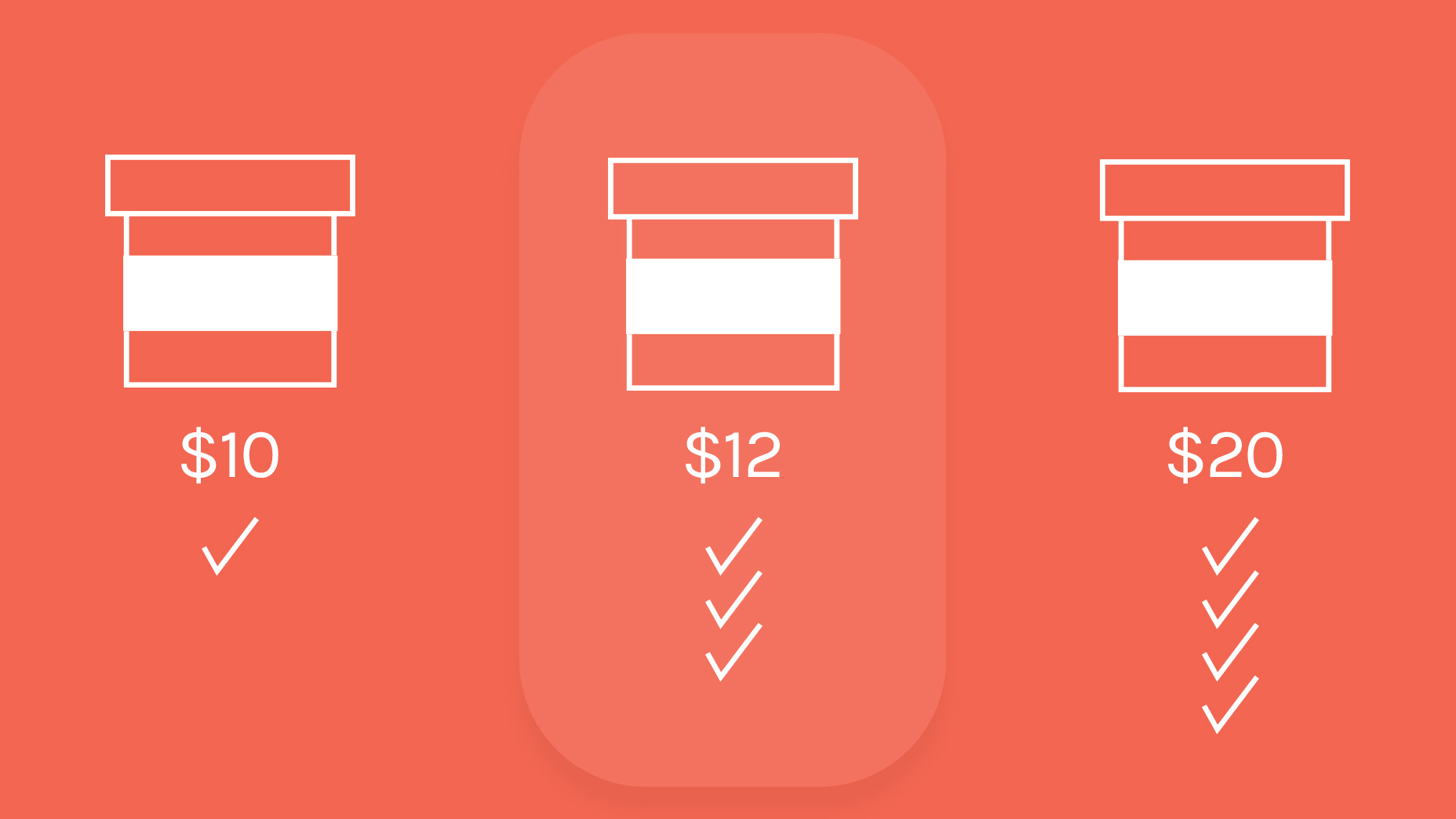
🔗 Learn more about this SKU Rationalization to help you effectively manage your cannabis retail inventory.
Leverage Comparative Pricing
Alternatively, think of the detergent example. By displaying a selection of brands and prices, a retailer can provide a frame of reference for customers. However, be cautious not to focus solely on price; emphasize unique value propositions. Highlight features, benefits, and quality that could set products apart.
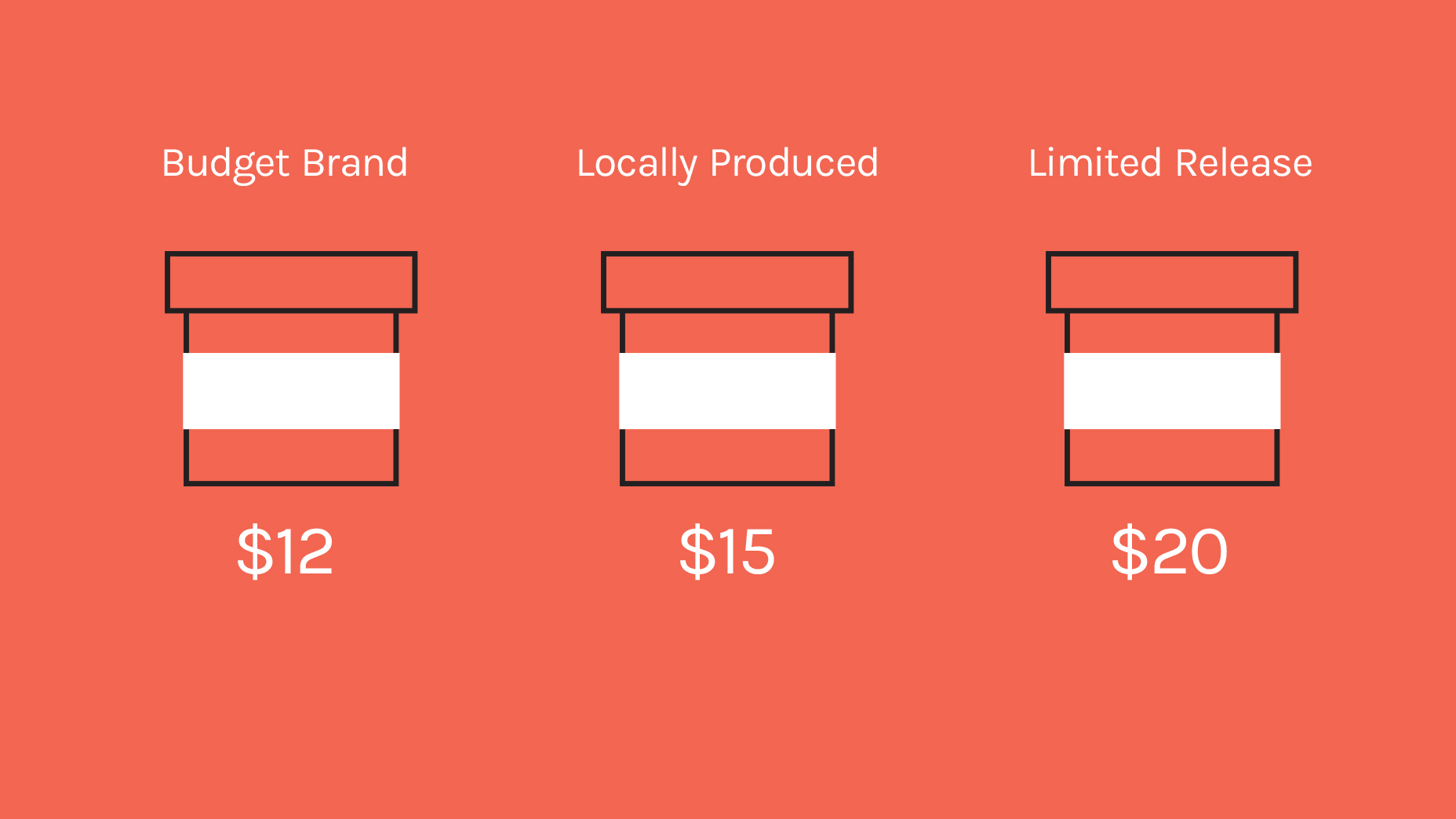
Avoid Overemphasizing Price Alone
While price anchoring is potent, it is important to not emphasize price to the detriment of everything else. Price does matter, but consumers value a holistic experience. Price alone likely will not help them select the best product for their needs. By supporting shopping through product education, store signage and merchandising.
Continuously Test and Optimize
At Vetrina Group, we love data when it comes to making clear and powerful choices for making a profitable cannabis retail or brand strategy. Consumer behaviour is not static, regularly assessing your pricing strategy and effectiveness of price anchoring will help you build your road map to profitability.
Experiment with different anchor prices, tier configurations, and messaging to determine what resonates most with your consumers. Analyzing your store data will help you fine-tune your approach over time.
How to Amplify Price Anchoring
The Bandwagon Effect: Joining the Crowd in Retail Psychology
The bandwagon effect is a psychological phenomenon that heavily influences consumer behaviour. It's the tendency to adopt trends, styles, and attitudes because others are doing the same. Think of it as a domino effect, where the more people join in, the stronger the urge becomes to follow suit.
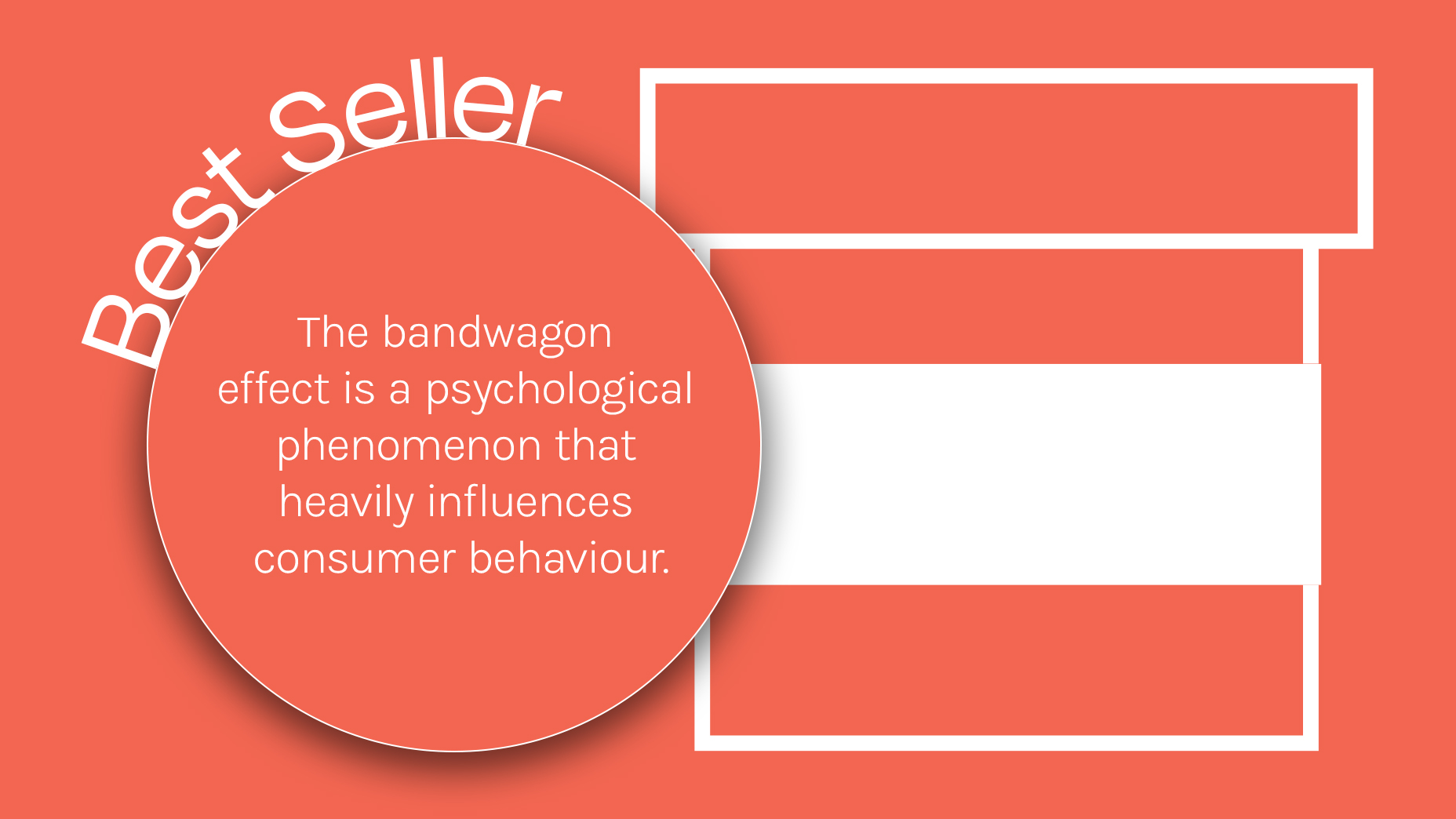
Consider a popular trend in tech gadgets. If many individuals praise a new device, it's easier for others to hop on the bandwagon without fully evaluating its benefits. This internal bias shapes decisions, sometimes steering us away from choices that truly match our needs.
In retail, the bandwagon effect can be seen when brands label products as "trending" or "popular." Consumers are more likely to select items that appear endorsed by the crowd. The bandwagon effect isn't just about following—it's about the interplay between external influence and internal biases.
It also works well because decision-making is often overwhelming for humans. The "most popular" option or the "flavour of the day" label can guide decisions. It is the same reason we ask our server what is popular on the menu when we go to a restaurant, or why when Oprah or Reese pick a book it becomes an instant bestseller. This bandwagon effect, combined with the anchor price, simplifies decision-making for customers, making them more likely to say "yes."
Consumers Avoid Extremes When Shopping
Avoiding extremes is another human tendency. Just like how most people choose a medium coffee, price anchoring works by surrounding the desired option with higher and lower tiers. The middle option becomes the sweet spot for most customers.
In the world of economics, this phenomenon is known as the "relativity of prices." It can be compared to a game of contrasts, where the cost of a product gains significance only when compared to something else. It's like a spotlight that brightens or dims based on what surrounds it. A humble store brand becomes a shining star of savings only when compared to its more expensive counterpart.
Consumers may also steer away from the lowest-priced item when they see it alongside options, as they may feel that it's "too good to be true" and wonder why the price difference is so steep. Much like Goldilocks tasting porridge, consumers are looking for just the right level of a sweet deal. Not too steep, and not too cheap.
🔗 Learn more about this issue in our blog: Value Payoff Dilemma: The Psychology of Discounts and Perception
Tips For Retailers and Brands
Retailers
- Tiered Pricing Strategy: Offer different versions of your products at varying prices to create a natural hierarchy. This guides customers towards choices that match their needs while enhancing perceived value.
- Comparative Pricing: Display a range of brands and prices to provide a frame of reference for customers. Highlight unique value propositions alongside prices.
- Holistic Approach: Balance competitive pricing with other factors like quality or potency.
- Clear Value Propositions: Create distinct value propositions for each tier or product. Explain benefits and justify prices transparently to build trust.
- Continuous Optimization: Regularly assess and experiment with different pricing strategies. Gather feedback and data to refine your approach over time.
Brands
- Tiered Product Offerings: Develop various product tiers at different price points. This capitalizes on price anchoring, offering customers a range of options that suit their preferences. You will also avoid competing with your own products.
- Comparative Product Pricing: Showcase your product range with diverse price points. Provide context for customers to assess value, emphasizing unique features and benefits.
- Comprehensive Consumer Experience: While price is crucial, don't neglect quality and what makes your product unique! Integrate value beyond pricing to create a well-rounded appeal.
- Unique Value Statements: Clearly communicate the advantages of each product tier. Detail how benefits justify prices, fostering transparency and customer trust.
- Pricing Strategy Refinement: Regularly evaluate your pricing strategies. Experiment with different approaches, analyze feedback and optimize based on customer response.
Price is not an inherent property of a product—it's relative. Price anchoring plays with our cognitive biases, shaping our perceptions of value and influencing our purchasing decisions. By understanding the psychology behind price anchoring and exploring its various types and applications, both retailers and consumers can navigate the shopping landscape with a new level of awareness. The dance of numbers and the interplay of reference points will forever change the way you view prices and value in retail.
If this blog has you revisiting your pricing strategy be sure to sign up for our newsletter as we continue to share expert insights you can action.
Tactical insights to become
a Cannabis Retail Insider!
Access expert insights in one easy-to-digest
and follow-along newsletter.
We hate SPAM. We will never sell your information, for any reason.

